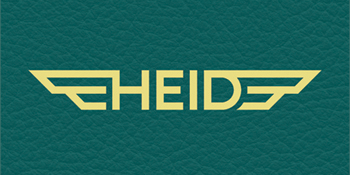Building upon the insights from Why Symbols Matter: From Greek Masks to Modern Games, it becomes evident that symbols are not mere decorative elements but vital forces that influence the very fabric of cultural identity, perception, and societal development. This article delves deeper into the evolution, psychological impact, and contemporary significance of symbols, illustrating their enduring power to shape narratives across time and space.
1. The Evolution of Cultural Symbols: From Ancient to Modern Contexts
a. Tracing the transformation of symbols across different eras and civilizations
Cultural symbols have been integral to human societies since prehistoric times. Early symbols, such as cave paintings in Chauvet and Lascaux, served as visual language conveying stories, spiritual beliefs, and social cohesion. As civilizations evolved—Ancient Egypt’s hieroglyphs, Mesopotamian seals, or Mayan glyphs—symbols became more complex, often representing deities, rulers, or cosmological concepts. During the Middle Ages, heraldic symbols articulated lineage and social status, while Renaissance art reintroduced mythological and religious symbols imbued with layered meanings. Modern symbols—corporate logos, national flags, digital icons—are descendants of this long tradition, continually adapted to new contexts and technologies.
b. How historical shifts influence the meaning and function of symbols in societies
Historical events—such as revolutions, colonizations, and technological breakthroughs—have significantly transformed symbolic meanings. For instance, the swastika, an ancient symbol of good luck, was appropriated and distorted during the 20th century, transforming its perception globally. Similarly, the rise of nationalism in the 19th and 20th centuries saw flags and national emblems become potent tools for identity and sovereignty. Technological shifts, like the printing press or social media, have democratized symbol dissemination, allowing ideas and symbols to spread rapidly, often reshaping cultural narratives in real time.
c. The role of technological advancements in redefining symbolic communication
Digital technology has revolutionized how symbols are created, shared, and interpreted. Emojis, memes, and online icons serve as modern hieroglyphs, transcending language barriers and fostering global communities. These symbols often carry layered meanings, susceptible to reinterpretation, as seen in the viral spread of memes that embed social or political commentary. Virtual spaces have also introduced fluidity, where symbols can evolve rapidly, challenging traditional notions of fixed meanings and emphasizing the dynamic nature of contemporary cultural narratives.
2. Symbols as Tools of Identity Formation and Social Cohesion
a. How symbols create shared identities within communities
Symbols serve as collective signifiers that forge a sense of belonging. National flags, religious icons, and cultural motifs act as rallying points, reinforcing group identity. For example, the rainbow flag has become a universal emblem of LGBTQ+ pride, uniting diverse individuals under a shared cause. Similarly, indigenous symbols often encapsulate ancestral stories and values, strengthening community bonds across generations.
b. The use of symbols in rituals, ceremonies, and collective memory
Rituals amplify the power of symbols by embedding them into collective practices. Religious ceremonies employ symbols like the cross, crescent, or lotus to connect participants with spiritual beliefs. National holidays often feature symbols—such as the Pledge of Allegiance or fireworks—that evoke shared history and patriotism. These rituals serve to reinforce societal cohesion and transmit cultural values across generations.
c. Examples of symbols fostering social cohesion beyond entertainment and art
Beyond entertainment, symbols underpin societal stability. Police badges and military insignia symbolize authority and order, while corporate logos foster consumer loyalty. International symbols like the Red Cross or United Nations emblem represent humanitarian ideals, guiding global cooperation. In crises, symbols can unify disparate groups, as seen during global health campaigns where icons like the vaccine syringe promote collective action.
3. The Psychological Power of Symbols in Shaping Perception and Behavior
a. How symbols influence individual and collective subconscious
Symbols operate beneath conscious awareness, shaping perceptions and emotions. For example, the color red evokes passion or urgency, influencing consumer behavior and political rallies. Symbols like the swastika or hammer and sickle trigger subconscious associations rooted in history and ideology. Research in neuropsychology indicates that symbols activate specific brain regions linked to memory and emotion, reinforcing their power over perceptions.
b. The role of symbolism in shaping values, beliefs, and social norms
Symbols embody societal ideals—justice, freedom, purity—and reinforce normative behaviors. The Statue of Liberty symbolizes liberty and welcoming, shaping American identity and values. Religious symbols reinforce moral codes, influencing individual behavior and societal laws. Their repeated use in education, media, and public discourse solidifies these norms, demonstrating symbolism’s role in cultural continuity.
c. Case studies of symbols used to manipulate or inspire public sentiment
Historical examples include propaganda posters during World War II, where symbols like Uncle Sam or the Nazi swastika galvanized support or opposition. Political campaigns often deploy symbols—such as the “Hope” poster of Barack Obama—that inspire optimism. Conversely, symbols can be exploited to manipulate, as in hate symbols propagated by extremist groups. Understanding these cases reveals the potent influence of symbols on collective consciousness.
4. Ambiguity and Duality in Symbolic Meanings
a. When symbols carry multiple, sometimes conflicting, interpretations
Many symbols possess layered meanings that vary across cultures and contexts. The lotus flower symbolizes purity in Buddhism but can also represent rebirth or chaos in other traditions. The swastika, historically a symbol of auspiciousness, became associated with hatred due to its adoption by the Nazi regime. This duality underscores the importance of contextual understanding when interpreting symbols, as their meanings can shift dramatically over time.
b. The impact of cultural context on symbolic ambiguity
Cultural backgrounds influence how symbols are perceived. For example, the color white signifies purity in Western cultures but can symbolize mourning in East Asia. Religious symbols may be revered in one context and misunderstood or even offensive in another. Recognizing these nuances is crucial for effective cross-cultural communication and avoiding misinterpretations that can lead to conflicts.
c. Examples of symbols that have evolved or been contested over time
| Symbol | Historical Meaning | Contemporary Perception |
|---|---|---|
| Swastika | Ancient symbol of auspiciousness in Hinduism, Buddhism, and Jainism | Associated with Nazism, hate, and intolerance in the West |
| Rainbow Flag | Symbol of hope and diversity in LGBTQ+ community | Universal emblem of pride and inclusion |
5. Symbols in the Digital Age: New Frontiers of Cultural Narratives
a. The rise of digital symbols, memes, and online iconography
The internet has spawned a new symbolic language—emojis, memes, and icons—that rapidly convey complex emotions and ideas. Emojis like 😂 or ❤️ serve as modern hieroglyphs, transcending language barriers and fostering shared understanding across cultures. Memes, often combining images and text, encode social and political commentary, shaping public discourse in ways traditional symbols could not.
b. How digital symbols influence contemporary identity and community building
Online symbols forge virtual communities around shared interests or values. Hashtags like #BlackLivesMatter or #MeToo act as rallying points, creating digital identities that influence real-world actions. These symbols can empower marginalized groups, foster solidarity, and mobilize collective action, demonstrating the evolving power of symbolism in social activism.
c. Challenges and opportunities of symbolic fluidity in virtual spaces
While digital symbols enable rapid cultural shifts and inclusive expressions, they also pose challenges. The fluidity of online symbols can lead to misunderstandings or appropriation. For example, the reappropriation of symbols like the swastika or Confederate flag by different groups highlights how meanings can be contested in virtual spaces. Recognizing this fluidity is essential to harnessing digital symbols ethically and effectively.
6. From Personal to Political: The Political Power of Symbols in Shaping Narratives
a. Symbols as tools for social movements and political identity
Symbols have historically been central to political activism. The raised fist signifies solidarity and resistance, while the Peace symbol encapsulates anti-war sentiment. These icons distill complex ideologies into potent visual cues, rallying supporters and communicating messages succinctly. Their repeated use solidifies collective identities and can influence policy and societal change.
b. Case studies of symbols used in propaganda, activism, and nation-building
The Soviet hammer and sickle symbolized proletarian unity and revolution, shaping a national identity. Similarly, the pink triangle, once a Nazi persecution symbol, was reclaimed by LGBTQ+ activists as a symbol of resilience. These examples demonstrate how symbols can be repurposed to challenge or reinforce societal narratives, influencing public perception and political discourse.
c. The potential for symbols to unify or divide within societal conflicts
Symbols can act as double-edged swords. While they unify groups sharing common values, they can also deepen divides when associated with exclusion or hatred. For instance, Confederate symbols evoke regional identity for some but symbolize racism and rebellion for others. Understanding this duality is vital for navigating and mediating social conflicts.
7. Non-Obvious Symbols: Hidden Meanings and Subversive Uses
a. Symbols embedded in architecture, fashion, and media with concealed messages
Architectural designs often hide symbols conveying power or ideology—such as the pyramids’ alignment with celestial bodies or hidden motifs in government buildings. Fashion can subtly incorporate symbols—like logos or patterns—that signify social status or political allegiance. Media, too, embeds subliminal messages, influencing perception below conscious awareness.
b. Subversion of traditional symbols to challenge dominant narratives
Artists and activists often subvert traditional symbols to critique or redefine societal norms. For example, Banksy’s street art reinterprets symbols like peace signs or corporate logos to challenge consumerism and authority. Such subversion sparks dialogue and encourages viewers to reconsider established narratives.
c. The importance of decoding hidden symbols to understand cultural undercurrents
Deciphering concealed messages requires cultural literacy and critical thinking. Media literacy programs emphasize recognizing symbols’ layered meanings to prevent manipulation. Understanding hidden symbols unveils undercurrents of power, resistance, or ideology shaping societal discourse.
8. Returning to Roots: How Modern Symbols Reconnect with Ancient Narratives
a. The resurgence of traditional symbols in contemporary culture
Many modern movements revisit ancient symbols to evoke authenticity and continuity. The reemergence of Celtic knots or Native American motifs in fashion and design links current identities with ancestral narratives. This revival reinforces cultural pride and preserves historical memory amid globalization.

